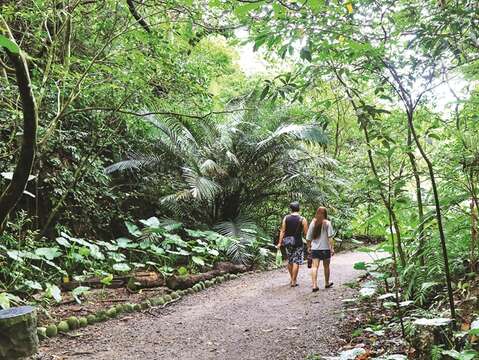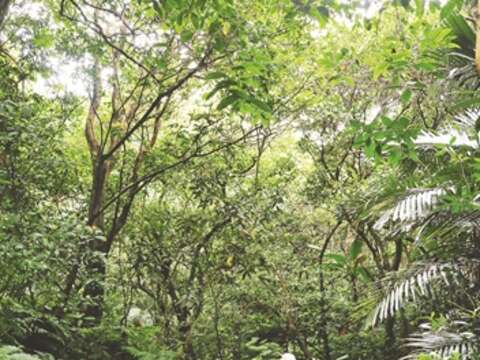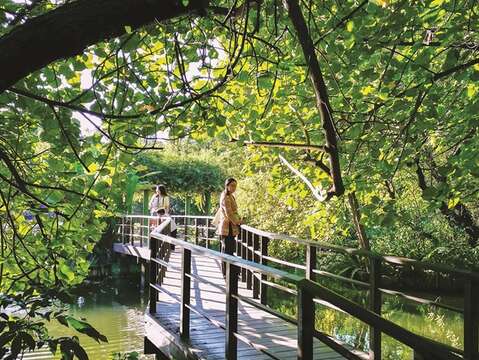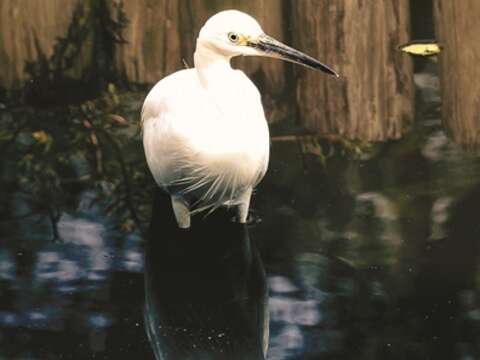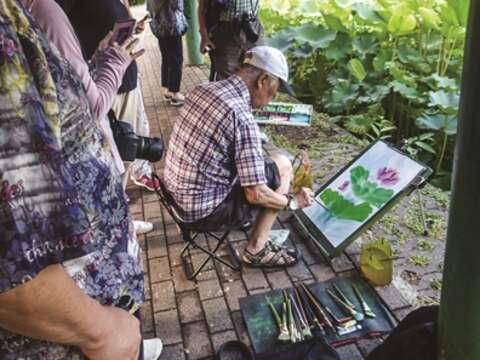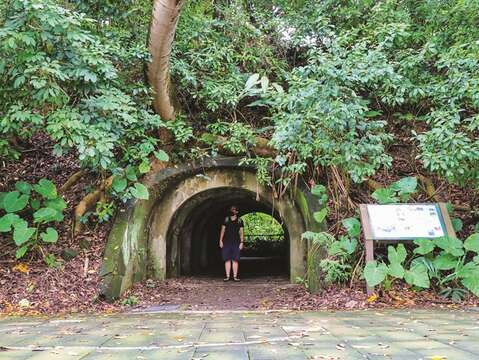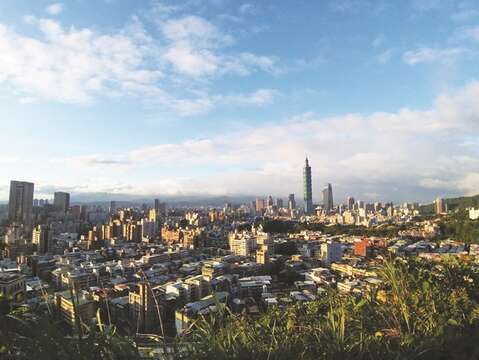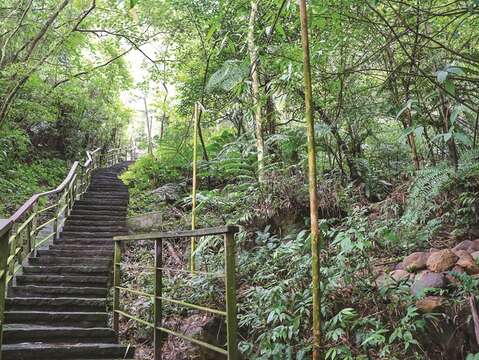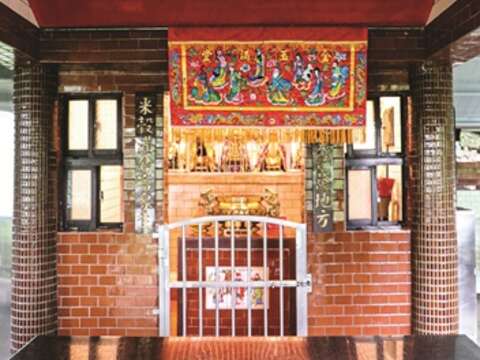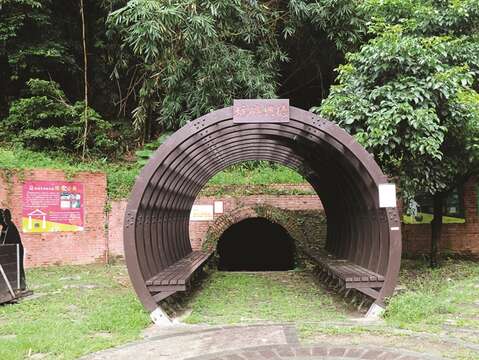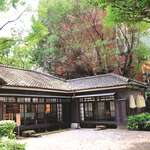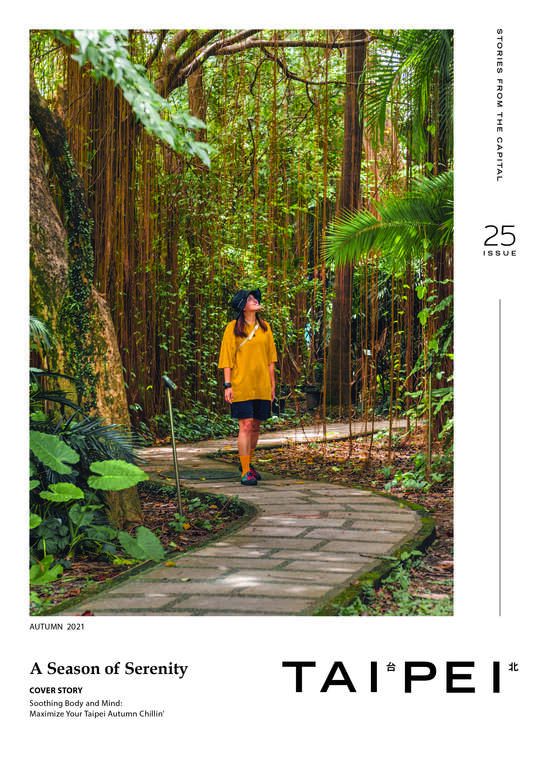Post date:2021-09-11
1009
TAIPEI #25 (2021 Autumn)
Green Oases in the Heart of Taipei
Author Rick Charette
Photographer Yenping Yang, Taiwan Scene
The central core of bustling Taipei City, dense with buildings and people, sits in a basin that is barely above sea level. Taipei Basin is surrounded by mountains, save for the narrow valleys through which multiple waterways flow and a single waterway flows out, headed the short distance needed to reach the freedom of the sea.
Taipei's ringing mountains mean great swathes of trail-intersected low, mid, and even high-altitude green walks within a quick jaunt from the central core. In this article, however, our destination is a trio of large, popular greenspaces right in the core itself that provide you with a breath of fresh "green" air. Each is a splendid getaway-in-the-city perfect for chilling and relaxing — in autumn and all other seasons, too. Are you ready for the visit to these oases in the heart of Taipei?
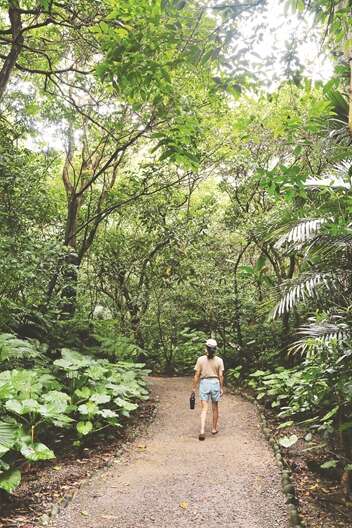 ▲Walking into the oasis in the center of Taipei, the fresh air drives away any and all worries in life!
▲Walking into the oasis in the center of Taipei, the fresh air drives away any and all worries in life!
Taipei Botanical Garden 台北植物園
This pathway-interlaced landscaped garden attraction is a luxuriant eight-hectare oasis of green right in the heart of the central core. It's just a few minutes south on foot from MRT Xiaonanmen Station (捷運小南門站), along a quiet, leafy section of Boai Road (博愛路).
This space was developed by the Japanese during their 1895-1945 period of colonial rule. It first sprouted as a nursery, established in 1896, which was expanded to become a botanical research station and renamed the Taipei Botanical Garden in 1921. Today you'll find yourself immersed in a living cornucopia of specimens from some 2,000 plant species from Taiwan, Japan, China, Southeast Asia, and beyond.
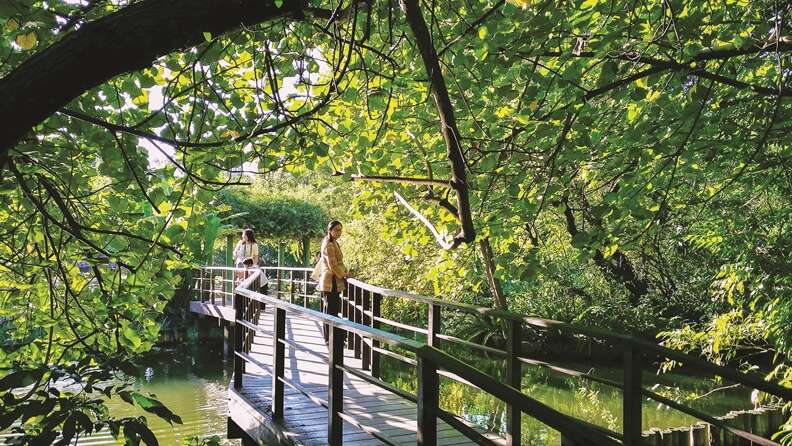 ▲Strolling the wooden boardwalk in Taipei Botanical Garden, you can enjoy the cool shade beneath the lush trees. (Photo/Yenping Yang)
▲Strolling the wooden boardwalk in Taipei Botanical Garden, you can enjoy the cool shade beneath the lush trees. (Photo/Yenping Yang)
The park has a wholly different look and character as it passes through each season, with each area designed to offer up changing blooms each quarter. To ensure that visitors will not miss the blooming season, the official website provides a special calendar displaying the bloom time and introduction of these different seasonal stars. The garden's most popular draw is the substantial Lotus Pond, almost always busy with photographers and painters, and the best place to enjoy a moment of quiet in this busy life.
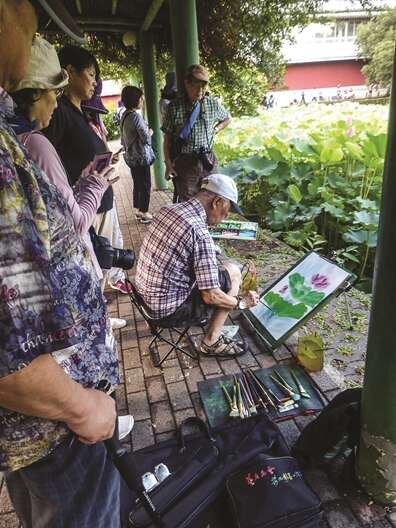 ▲The Lotus Pond in Taipei Botanical Garden is often surrounded by painters, sketching the aquatic scenery. (Photo/Yenping Yang)
▲The Lotus Pond in Taipei Botanical Garden is often surrounded by painters, sketching the aquatic scenery. (Photo/Yenping Yang)
The garden's quietness and prolificacy also make it perhaps the best insect and bird watching location within the urban core. Be on special watch for the shy, regal Malayan Night Heron. If you are lucky enough, you might spot stag beetles resting on the tree trunks or all kinds of dragonflies hovering over the surface of the pond, enjoying their unrestrained lives in the city oasis.
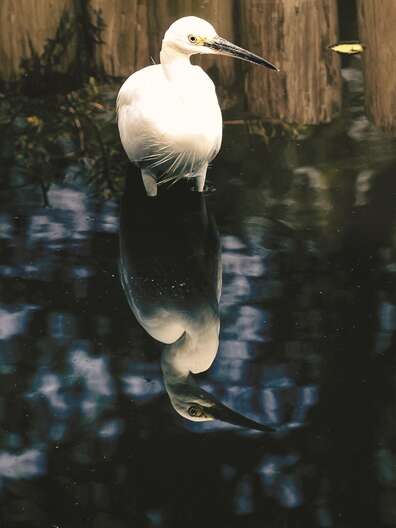 ▲Taipei Botanical Garden is home to many creatures, making it a perfect spot for birdwatching. (Photo/Yenping Yang)
▲Taipei Botanical Garden is home to many creatures, making it a perfect spot for birdwatching. (Photo/Yenping Yang)
TAIPEI BOTANICAL GARDEN
ADD 53, Nanhai Rd., Zhongzheng Dist.
HOURS 8:00am - 6:00pm
WEBSITE tpbg.tfri.gov.tw/en/Introduction.php
Fuyang Eco Park & Fuzhoushan Park 富陽生態公園與福州山公園
Fuyang Eco Park is in a compact little stream valley at the base of small, low Fuzhoushan (福州山, Fuzhou Mountain), which has an elevation of about 105 meters, on Taipei Basin's east side, the southeast edge of the city core. It's just a five-minute walk southwest from MRT Linguang Station (捷運麟光站), on the MRT Wenhu Line (捷運文湖線).
The eco-park is on the mountain's forest-covered low slope. Spread out over 3.8 hectares, this was originally a hidden military ammunition depot site, decommissioned in 1988. Thanks to long-term restricted access, the local ecology has remained intact. Much military infrastructure also remains, with dugouts and tunnels harkening back to less tranquil days.
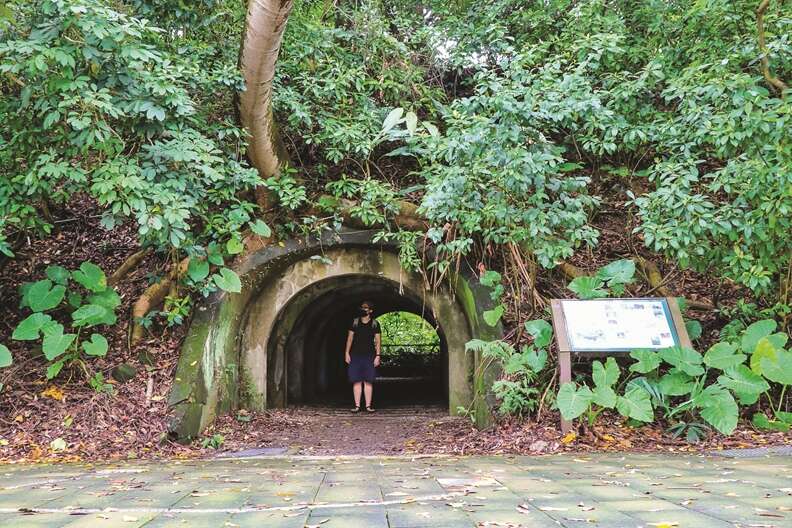 ▲Military infrastructure such as this old culvert can still be spotted in Fuyang Eco Park.
▲Military infrastructure such as this old culvert can still be spotted in Fuyang Eco Park.
Like Taipei Botanical Garden, this peaceful spot, rich with plants and insect food, is a natural habitat for birds, and hence great for birdwatching. Proudly proclaimed here are the "Three Musketeers of Fuyang (富陽三劍客)" — the Taiwan barbet (五色鳥), Japanese white-eye (綠繡眼), and black bulbul (紅嘴黑鵯) — which flit about the treetops.
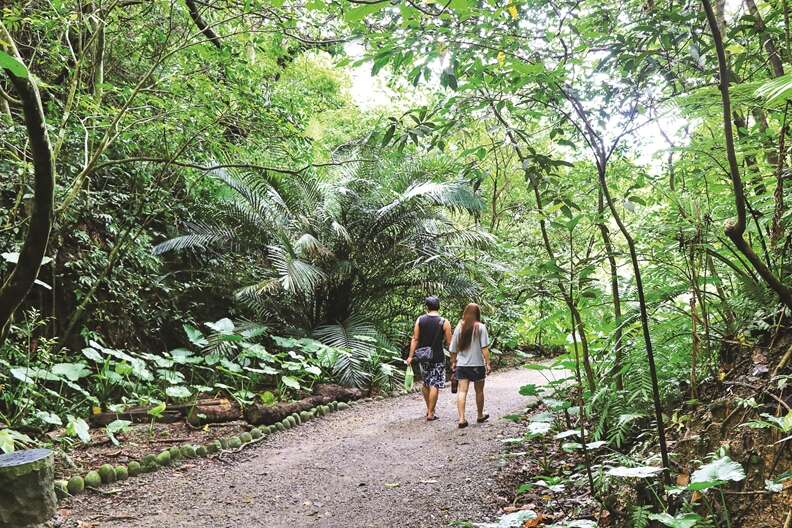 ▲Walking in Fuyang Eco Park is like stepping into a primitive jungle.
▲Walking in Fuyang Eco Park is like stepping into a primitive jungle.
A short, comparatively easy trail from the eco-park leads up onto forested Fuzhou Mountain, home to Fuzhoushan Park, a comfortable getaway of quick trails and great views. Rest-pavilion outlooks offer up grand photo ops of far-off Guanyinshan (觀音山, Mt. Guanyin) and the Yangmingshan massif toward the north coast, and of the skyscraping Taipei 101 building in the mid-distance. A tidbit that fascinates foreign visitors is that this park, dedicated to eco-preservation, occupies ground held until not long past by a sprawling, tree-denuded public cemetery, tombs clearly visible from the surrounding flatland, cleared as part of a slope- reclamation initiative.
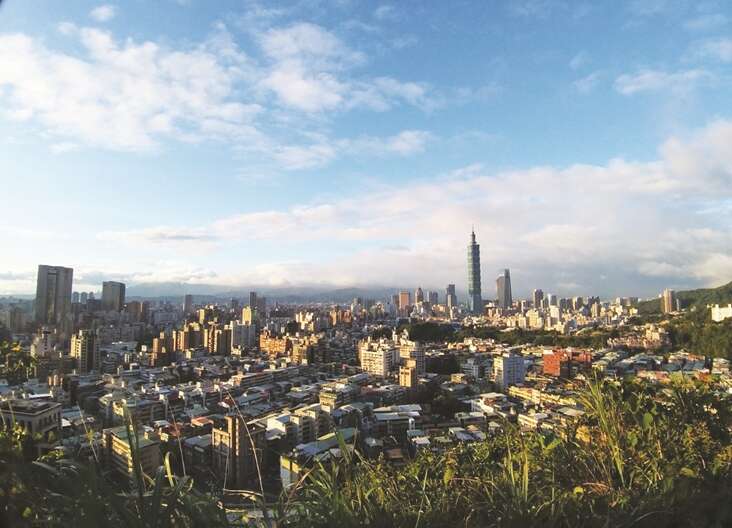 ▲Within a short 15-minute hike, the viewing platform of Fuzhoushan Park offers a grand view of Taipei City.
▲Within a short 15-minute hike, the viewing platform of Fuzhoushan Park offers a grand view of Taipei City.
Tiaomi Historic Trail 糶米古道
This trail is south of MRT Xiangshan Station (捷運象山站). It takes you up to one of Taipei's most popular hiking attractions, low-altitude Four Beasts Mountains, which has sparkling views of nearby Taipei 101, the basin's urban buildup, and mountains to the north.
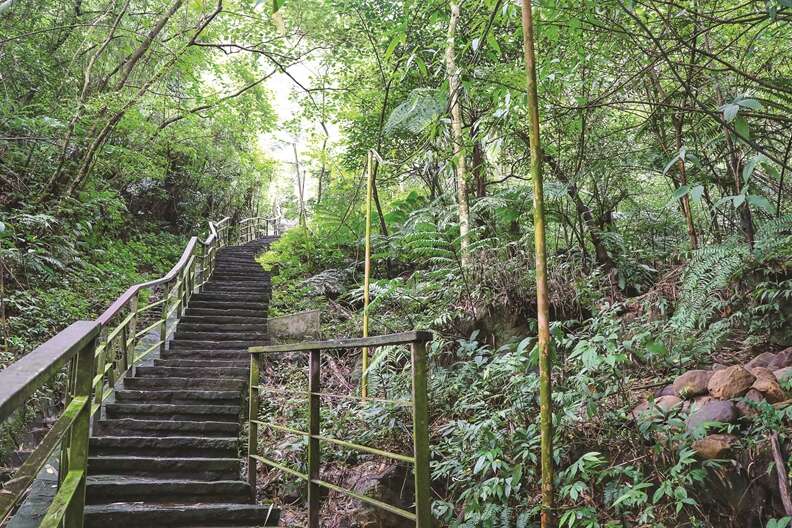 ▲Following the greenery uphill along the Tiaomi Historic Trail invites a peaceful moment into one's busy life.
▲Following the greenery uphill along the Tiaomi Historic Trail invites a peaceful moment into one's busy life.
A 25-minute walk from the metro station to the trailhead, or a leisurely 10-minute ride on YouBike, the hike starts from an uphill creek under the shade of various tree species, which leads you to the trailhead. Right beside the trailhead is the entrance to the long-abandoned Dexing Coal Mine (德興煤礦), opened in 1897, its prime operating period in the 1940s. In the square before it are explanatory boards (in Chinese) and a model push-car, and you can walk right into the tunnel — a short, well-lit, well-paved way.
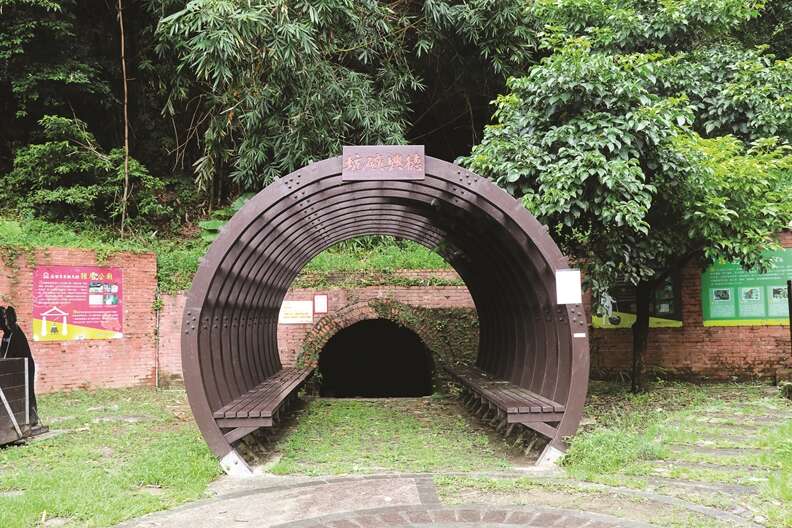 ▲Ruins of Dexing Coal Mine have become a tourist attraction along Tiaomi Historic Trail.
▲Ruins of Dexing Coal Mine have become a tourist attraction along Tiaomi Historic Trail.
Surrounded by dense trees and ferns, the trail is relatively steep, with about 500 steps in total leading to the top. It was laid out in the first half of the early 1800s by local rice farmers — the two Chinese characters "tiaomi (糶米)" means "peddling rice" — to take their rice into the next valley southeast beyond Taipei Basin. Toward the top is the Tiaomi Temple (糶米公廟), dedicated to the Earth God. It's said that rice haulers would stop here to rest and leave a bowl of rice in gratitude for safe passage, leading through various expansions to today's temple. The trail's ridge-top end presents tremendous views of Taipei Basin before you and Jingmei River (景美溪) valley behind.
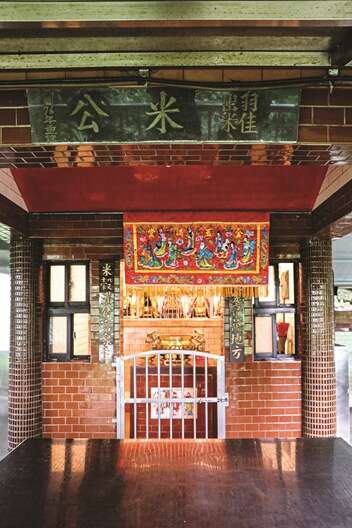 ▲Locals believe that Tiaomi Temple blesses the people of Taipei from the past to the present.
▲Locals believe that Tiaomi Temple blesses the people of Taipei from the past to the present.
Green Oases in the Heart of Taipei
Author Rick Charette
Photographer Yenping Yang, Taiwan Scene
The central core of bustling Taipei City, dense with buildings and people, sits in a basin that is barely above sea level. Taipei Basin is surrounded by mountains, save for the narrow valleys through which multiple waterways flow and a single waterway flows out, headed the short distance needed to reach the freedom of the sea.
Taipei's ringing mountains mean great swathes of trail-intersected low, mid, and even high-altitude green walks within a quick jaunt from the central core. In this article, however, our destination is a trio of large, popular greenspaces right in the core itself that provide you with a breath of fresh "green" air. Each is a splendid getaway-in-the-city perfect for chilling and relaxing — in autumn and all other seasons, too. Are you ready for the visit to these oases in the heart of Taipei?
 ▲Walking into the oasis in the center of Taipei, the fresh air drives away any and all worries in life!
▲Walking into the oasis in the center of Taipei, the fresh air drives away any and all worries in life!Taipei Botanical Garden 台北植物園
This pathway-interlaced landscaped garden attraction is a luxuriant eight-hectare oasis of green right in the heart of the central core. It's just a few minutes south on foot from MRT Xiaonanmen Station (捷運小南門站), along a quiet, leafy section of Boai Road (博愛路).
This space was developed by the Japanese during their 1895-1945 period of colonial rule. It first sprouted as a nursery, established in 1896, which was expanded to become a botanical research station and renamed the Taipei Botanical Garden in 1921. Today you'll find yourself immersed in a living cornucopia of specimens from some 2,000 plant species from Taiwan, Japan, China, Southeast Asia, and beyond.
 ▲Strolling the wooden boardwalk in Taipei Botanical Garden, you can enjoy the cool shade beneath the lush trees. (Photo/Yenping Yang)
▲Strolling the wooden boardwalk in Taipei Botanical Garden, you can enjoy the cool shade beneath the lush trees. (Photo/Yenping Yang)The park has a wholly different look and character as it passes through each season, with each area designed to offer up changing blooms each quarter. To ensure that visitors will not miss the blooming season, the official website provides a special calendar displaying the bloom time and introduction of these different seasonal stars. The garden's most popular draw is the substantial Lotus Pond, almost always busy with photographers and painters, and the best place to enjoy a moment of quiet in this busy life.
 ▲The Lotus Pond in Taipei Botanical Garden is often surrounded by painters, sketching the aquatic scenery. (Photo/Yenping Yang)
▲The Lotus Pond in Taipei Botanical Garden is often surrounded by painters, sketching the aquatic scenery. (Photo/Yenping Yang)The garden's quietness and prolificacy also make it perhaps the best insect and bird watching location within the urban core. Be on special watch for the shy, regal Malayan Night Heron. If you are lucky enough, you might spot stag beetles resting on the tree trunks or all kinds of dragonflies hovering over the surface of the pond, enjoying their unrestrained lives in the city oasis.
 ▲Taipei Botanical Garden is home to many creatures, making it a perfect spot for birdwatching. (Photo/Yenping Yang)
▲Taipei Botanical Garden is home to many creatures, making it a perfect spot for birdwatching. (Photo/Yenping Yang)TAIPEI BOTANICAL GARDEN
ADD 53, Nanhai Rd., Zhongzheng Dist.
HOURS 8:00am - 6:00pm
WEBSITE tpbg.tfri.gov.tw/en/Introduction.php
Fuyang Eco Park & Fuzhoushan Park 富陽生態公園與福州山公園
Fuyang Eco Park is in a compact little stream valley at the base of small, low Fuzhoushan (福州山, Fuzhou Mountain), which has an elevation of about 105 meters, on Taipei Basin's east side, the southeast edge of the city core. It's just a five-minute walk southwest from MRT Linguang Station (捷運麟光站), on the MRT Wenhu Line (捷運文湖線).
The eco-park is on the mountain's forest-covered low slope. Spread out over 3.8 hectares, this was originally a hidden military ammunition depot site, decommissioned in 1988. Thanks to long-term restricted access, the local ecology has remained intact. Much military infrastructure also remains, with dugouts and tunnels harkening back to less tranquil days.
 ▲Military infrastructure such as this old culvert can still be spotted in Fuyang Eco Park.
▲Military infrastructure such as this old culvert can still be spotted in Fuyang Eco Park.Like Taipei Botanical Garden, this peaceful spot, rich with plants and insect food, is a natural habitat for birds, and hence great for birdwatching. Proudly proclaimed here are the "Three Musketeers of Fuyang (富陽三劍客)" — the Taiwan barbet (五色鳥), Japanese white-eye (綠繡眼), and black bulbul (紅嘴黑鵯) — which flit about the treetops.
 ▲Walking in Fuyang Eco Park is like stepping into a primitive jungle.
▲Walking in Fuyang Eco Park is like stepping into a primitive jungle.A short, comparatively easy trail from the eco-park leads up onto forested Fuzhou Mountain, home to Fuzhoushan Park, a comfortable getaway of quick trails and great views. Rest-pavilion outlooks offer up grand photo ops of far-off Guanyinshan (觀音山, Mt. Guanyin) and the Yangmingshan massif toward the north coast, and of the skyscraping Taipei 101 building in the mid-distance. A tidbit that fascinates foreign visitors is that this park, dedicated to eco-preservation, occupies ground held until not long past by a sprawling, tree-denuded public cemetery, tombs clearly visible from the surrounding flatland, cleared as part of a slope- reclamation initiative.
 ▲Within a short 15-minute hike, the viewing platform of Fuzhoushan Park offers a grand view of Taipei City.
▲Within a short 15-minute hike, the viewing platform of Fuzhoushan Park offers a grand view of Taipei City.Tiaomi Historic Trail 糶米古道
This trail is south of MRT Xiangshan Station (捷運象山站). It takes you up to one of Taipei's most popular hiking attractions, low-altitude Four Beasts Mountains, which has sparkling views of nearby Taipei 101, the basin's urban buildup, and mountains to the north.
 ▲Following the greenery uphill along the Tiaomi Historic Trail invites a peaceful moment into one's busy life.
▲Following the greenery uphill along the Tiaomi Historic Trail invites a peaceful moment into one's busy life.A 25-minute walk from the metro station to the trailhead, or a leisurely 10-minute ride on YouBike, the hike starts from an uphill creek under the shade of various tree species, which leads you to the trailhead. Right beside the trailhead is the entrance to the long-abandoned Dexing Coal Mine (德興煤礦), opened in 1897, its prime operating period in the 1940s. In the square before it are explanatory boards (in Chinese) and a model push-car, and you can walk right into the tunnel — a short, well-lit, well-paved way.
 ▲Ruins of Dexing Coal Mine have become a tourist attraction along Tiaomi Historic Trail.
▲Ruins of Dexing Coal Mine have become a tourist attraction along Tiaomi Historic Trail.Surrounded by dense trees and ferns, the trail is relatively steep, with about 500 steps in total leading to the top. It was laid out in the first half of the early 1800s by local rice farmers — the two Chinese characters "tiaomi (糶米)" means "peddling rice" — to take their rice into the next valley southeast beyond Taipei Basin. Toward the top is the Tiaomi Temple (糶米公廟), dedicated to the Earth God. It's said that rice haulers would stop here to rest and leave a bowl of rice in gratitude for safe passage, leading through various expansions to today's temple. The trail's ridge-top end presents tremendous views of Taipei Basin before you and Jingmei River (景美溪) valley behind.
 ▲Locals believe that Tiaomi Temple blesses the people of Taipei from the past to the present.
▲Locals believe that Tiaomi Temple blesses the people of Taipei from the past to the present.Gallery
:::
Popular articles
 The First LGBTQIA+ Bookstore in the Chinese-Speaking World (TAIPEI Quarterly 2021 Autumn Vol.25)
The First LGBTQIA+ Bookstore in the Chinese-Speaking World (TAIPEI Quarterly 2021 Autumn Vol.25) Taipei's Got Rhythm: The City's Swing Culture (TAIPEI Quarterly 2021 Autumn Vol.25)
Taipei's Got Rhythm: The City's Swing Culture (TAIPEI Quarterly 2021 Autumn Vol.25) "Lang Lang Don't Cry" Pet Halfway House & Café: Finding Their Forever Home (TAIPEI Quarterly 2021 Autumn Vol.25)
"Lang Lang Don't Cry" Pet Halfway House & Café: Finding Their Forever Home (TAIPEI Quarterly 2021 Autumn Vol.25) A Farm-To-Table Revolution: Green Dining in Taipei (TAIPEI Quarterly 2021 Autumn Vol.25)
A Farm-To-Table Revolution: Green Dining in Taipei (TAIPEI Quarterly 2021 Autumn Vol.25) Taipei: City of a Hundred Grains (TAIPEI Quarterly 2021 Autumn Vol.25)
Taipei: City of a Hundred Grains (TAIPEI Quarterly 2021 Autumn Vol.25) A Sip of Spirits: Taipei Bar Culture and Bartending (TAIPEI Quarterly 2021 Autumn Vol.25)
A Sip of Spirits: Taipei Bar Culture and Bartending (TAIPEI Quarterly 2021 Autumn Vol.25)
 Green Oases in the Heart of Taipei (TAIPEI Quarterly 2021 Autumn Vol.25)
Green Oases in the Heart of Taipei (TAIPEI Quarterly 2021 Autumn Vol.25)